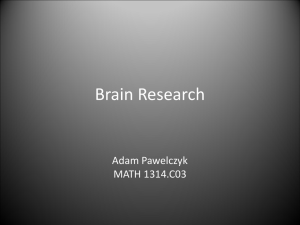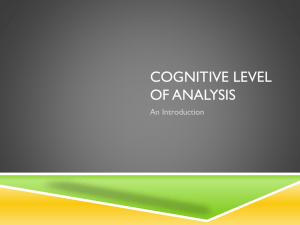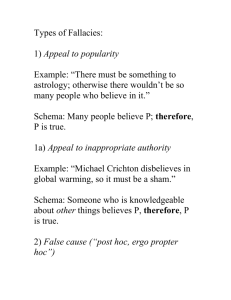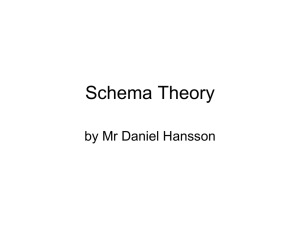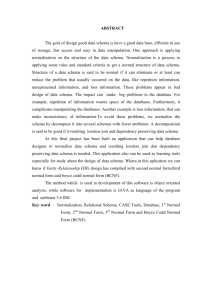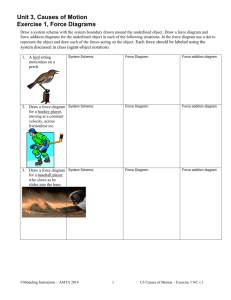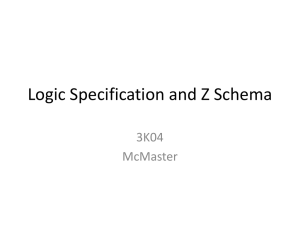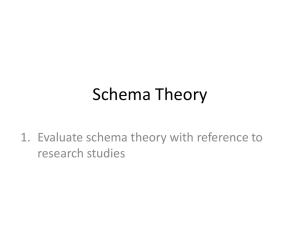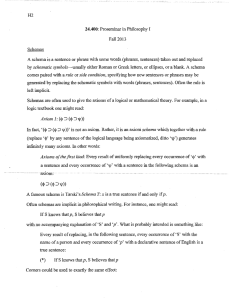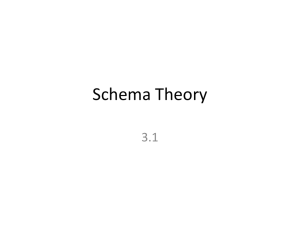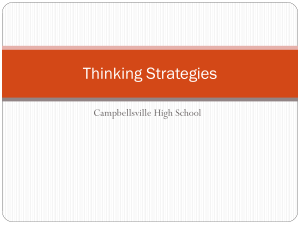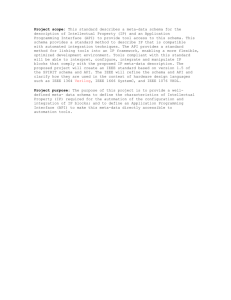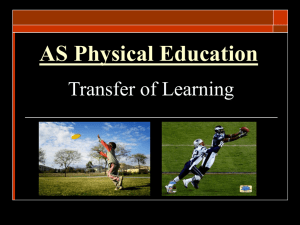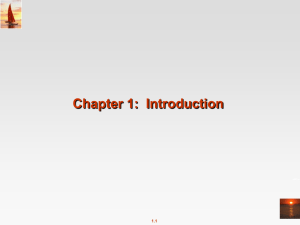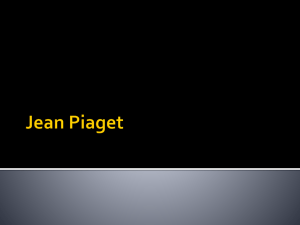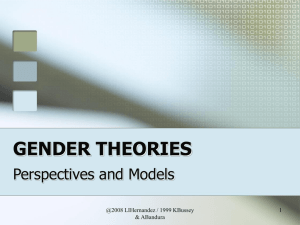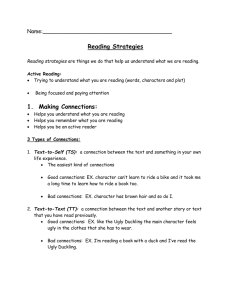CSI: Comprehension Strategy Instruction
advertisement
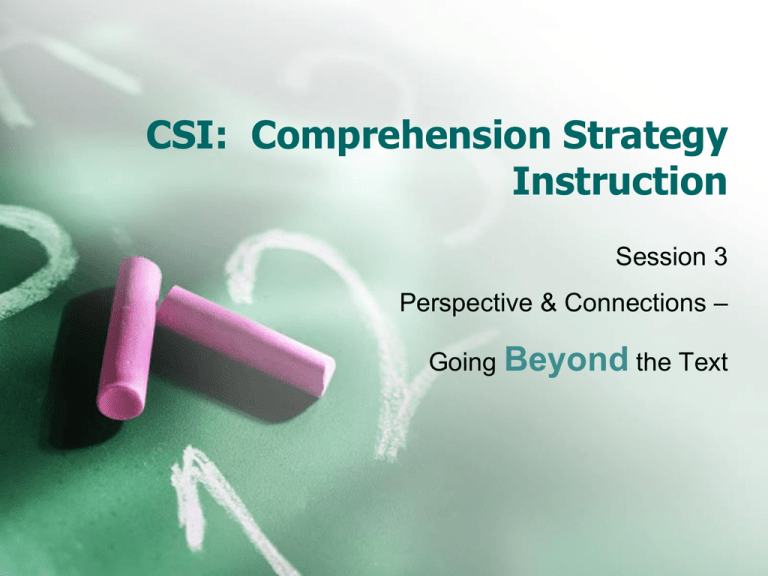
CSI: Comprehension Strategy Instruction Session 3 Perspective & Connections – Going Beyond the Text Chocolate Sustains Intelligence Reviewing Our Norms: • Be Prepared • Balance of Active Participation • Be Respectful of Everyone’s Right to Speak • Keep it Positive • Open Minds • Be Responsible for Your Learning • Chocolate ALWAYS Helps! Understanding Text Through A Child’s Eyes • Goal: Successfully connecting Schema to Text through Reading, Writing, Speaking, and Listening • EQ: Why is it important to help our students connect to the text? Review of Sessions 1 (About) and 2 (Within) Getting to Know… Queries and Questions… • Picture/Book Walks • Thick and Thin Questions Text Structure • Compass Activity Getting to know your students Queries or Questions Creating Thick Questions Techniques and Strategies QUICK WRITE: What have you integrated from either of these sessions? How did it work – was it successful? What were the obstacles? What would you have liked to have tried, but didn’t? •Share your response with a table partner •Volunteers to share… Take a few minutes to reflect; what happens when our students bring a different perspective to the classroom – one that we’re not aware of or expecting… THE STINKY CHEESE MAN “UGLY DUCKLING” At Your Table – Define Schema…. A Schema is a cognitive framework or concept that helps organize and interpret information. Schemas can be useful, because they allow us to take shortcuts in interpreting a vast amount of information. However, these mental frameworks also cause us to exclude pertinent information in favor of information that confirms our pre-existing beliefs and ideas. Schemas can contribute to stereotypes and make it difficult to retain new information that does not conform to our established schemas. •Personal Knowledge: Understanding built through everyday experiences •Content Knowledge: Understanding about the world gleaned through direct experiences as well as reading and listening •Literacy Knowledge: Understanding, including the general characteristics of particular kinds of text, built by reading texts Just Watch! http://www.youtube.com/watch?v=X9whxWNI7bE •Individually Reflect and Complete the Before, During, After Organizer – what do you see, hear, feel … * Watch the clip a second time; return to your organizer – citing evidence for your reactions. - what did you bring to the table??? EQ: Why is it important to connect schema to text – or media, or our instructional resources… •What is the evidence for your response? •How does connecting schema to text impact reading comprehension? •How might background knowledge affect understanding? •Have you witnessed examples of this in your classroom? Accountable Talk Your List • At your table, create a list of what you believe defines accountable talk behaviors Accountable Talk Moves and Functions: • Examine the Accountable Talk Moves and Functions Tool. • Compare your lists – how closely do they align? • Where/when would you use these moves? • How might these moves help your students connect Schema to text? Optical Illusions •Each table has a copy of a picture/illusion •Look at the picture at your table, what do see – what did you see first? •Using accountable talk, discuss what you saw and why; how did your background knowledge, schema, affect what you saw? •Someone will serve as the recorder – this individual will jot down the jist of the conversation (key phrases, style of conversations, moves used) How might what you discussed at your table relate to what you see in your classrooms? * Brainstorm some concrete ways you can help your students create connections to the text… When you come back from break, please sit with your grade level colleagues… Take 10 QUICK WRITE • What does “Reading and Writing are reciprocal processes” mean to you? • How does writing about what you saw – or read, finding the evidence, and writing about your thoughts, help construct your meaning? • What might this look like in your classroom? Wilson’s Literary Pillars (pre-reading) •Review the literary beliefs •Note the compliments •Review Page 2; as a table chose one strategy for before, during, and after reading, and share how you could or do use that strategy within the classroom. •Chart your concrete examples •Be prepared to share out at least one example from your table LET IT BE… http://listen.grooveshark.com/#/search/song?q=let %20it%20be Listen to the lyrics - Write your reaction to the song – what might the lyrics be referring to when they talk about Mother Mary? •Now listen again, this time following along by reading the lyrics •Review your initial response, did it change once you were able to read the text? •Take a moment to identify one to three schema that framed your reaction… •Share out EQ: Why is it important to help our student connect schema to text? •How does that affect student comprehension? •What were some ways we talked about today to help us do this? Core Issues of Lesson Design and Reflection… •How can this tool help you with your lesson planning process? •Look at the lesson you brought with you. Are there any strategies (from the pillars or moves) you already incorporate? •Are they being used as effectively as they could be? •How could you improve your lesson? •Take some time to work… http://spreadsheets.google.com/a/share.wil sonsd.org/viewform?hl=en&formkey=dGUt SEVXQjk1dEk4NVFwS3FXS0M5OUE6MQ &ndplr=1 •Use an index card if you have any questions •Please take time to complete the evaluation for this session •Thanks for your active participation – enjoy the weekend!!!!!



